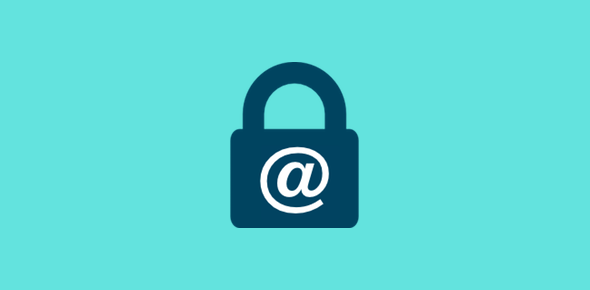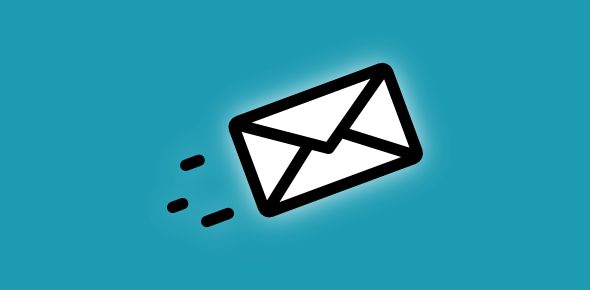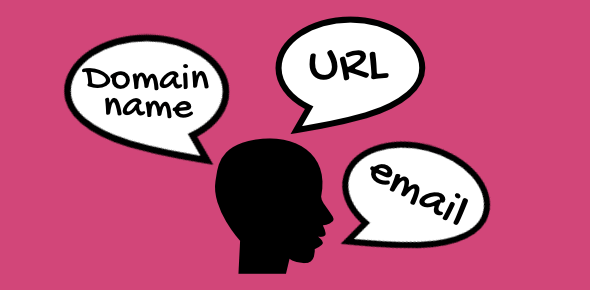The more you use an email account, the more precious it becomes. This holds true for all users! As time goes by, one ends up storing important and sensitive information at the email account. Protecting the account from hackers becomes imperative. Using a strong password and keeping the alternate email address, security questions and personal information up-to-date is essential. This page provides important tips on how to keep your email account secure and the stored information safe.
Account password
 The password is the most important security measure at the email account. Creating a good password is a sort of an art – it shouldn’t be something that can be guessed it in a few tries, and shouldn’t be so complex that even you forget it. Also, many people think that changing the password frequently enhances the security at the account. I don’t agree with that line of thought. Finally, never divulge your password to anyone or write it down on little bits of paper that have the tendency of getting lost very quickly.
The password is the most important security measure at the email account. Creating a good password is a sort of an art – it shouldn’t be something that can be guessed it in a few tries, and shouldn’t be so complex that even you forget it. Also, many people think that changing the password frequently enhances the security at the account. I don’t agree with that line of thought. Finally, never divulge your password to anyone or write it down on little bits of paper that have the tendency of getting lost very quickly.
Sponsored Links
Security questions
 At the time of account creation, most email services require you to set one or two security questions with their secret answers. It’s imperative that you take special care of this security feature. Answering these questions will help you regain access in case you forget the password or cannot remember the login details.
At the time of account creation, most email services require you to set one or two security questions with their secret answers. It’s imperative that you take special care of this security feature. Answering these questions will help you regain access in case you forget the password or cannot remember the login details.
Thus, the secret answers are as important as the password. They should be known only to you and have to be guarded with dear life. Do not set up obvious questions (eg: “Who is the President of the United States?”) as they would leave your email account vulnerable to hackers.
The “Remember Me” feature
 The ‘Remember me’ or equivalent feature which is typically found below the login fields on the email account sign in page is there for your convenience – using it avoids having to enter the username and password each time you want to access the account.
The ‘Remember me’ or equivalent feature which is typically found below the login fields on the email account sign in page is there for your convenience – using it avoids having to enter the username and password each time you want to access the account.
However, as I have always believed, this is a double-edged sword because if you don’t recall the password often, you might just forget it! Never use the ‘Remember me’ feature on a public or shared computer because it will enable others to access your account.
Alternate email
 If you had provided an alternate email account during the sign up process, make sure it is still working. The password retrieval information would, in most cases, be sent to this address.
If you had provided an alternate email account during the sign up process, make sure it is still working. The password retrieval information would, in most cases, be sent to this address.
Email account verification
 From time to time, the email service may ask you to verify the account. This generally happens when the account is relatively new. Ensure you follow the verification process correctly which may involve the use of your mobile phone.
From time to time, the email service may ask you to verify the account. This generally happens when the account is relatively new. Ensure you follow the verification process correctly which may involve the use of your mobile phone.
Phishing messages
![]() Phishing (pronounced just like ‘fishing’) is the nasty technique through which hackers try to get hold of your email account login information. Typically, a message which is made to look like coming from the legitimate source is dispatched en masse. The subject and the contents of this message are meant to shock or scare naive recipients who are many times fooled into entering their login details at phishing web sites by following links in the phishing email (more on this below).
Phishing (pronounced just like ‘fishing’) is the nasty technique through which hackers try to get hold of your email account login information. Typically, a message which is made to look like coming from the legitimate source is dispatched en masse. The subject and the contents of this message are meant to shock or scare naive recipients who are many times fooled into entering their login details at phishing web sites by following links in the phishing email (more on this below).
Phishing websites
![]() These are fraudulent web sites made to look like the genuine service. They play an important role in the phishing attack because it is at these sites that unsuspecting visitors divulge their login details (username and password). If you are new to the web or are just plain gullible, be sure to install an anti-phishing browser toolbar. For Yahoo! Mail users, I strongly recommend setting up the Sign-in Seal feature.
These are fraudulent web sites made to look like the genuine service. They play an important role in the phishing attack because it is at these sites that unsuspecting visitors divulge their login details (username and password). If you are new to the web or are just plain gullible, be sure to install an anti-phishing browser toolbar. For Yahoo! Mail users, I strongly recommend setting up the Sign-in Seal feature.
Keyloggers
 Let me really scare you now! Keyloggers are programs or small devices which record every keystroke made on the computer. You can very well imagine what happens if you access an online account from a machine that has such a program / device installed. Always be suspicious of public computers especially those at Internet cafes.
Let me really scare you now! Keyloggers are programs or small devices which record every keystroke made on the computer. You can very well imagine what happens if you access an online account from a machine that has such a program / device installed. Always be suspicious of public computers especially those at Internet cafes.
Account settings in email programs on other computers
 If you have set up the account on an email client at another computer, make sure you delete all the information once the work is done. This also applies to a computer you want to dispose off. Remember to take a backup of the email messages if POP3 was used to set up the account.
If you have set up the account on an email client at another computer, make sure you delete all the information once the work is done. This also applies to a computer you want to dispose off. Remember to take a backup of the email messages if POP3 was used to set up the account.
Malicious emails with risky attachments
 Email is probably the easiest method by which viruses and worms infect computers. These malicious little critters can cause havoc and literally take over your machine. Always have a good anti-virus program installed and keep it up-to-date with the latest virus definitions.
Email is probably the easiest method by which viruses and worms infect computers. These malicious little critters can cause havoc and literally take over your machine. Always have a good anti-virus program installed and keep it up-to-date with the latest virus definitions.






